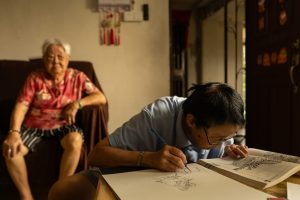It’s no secret that I like to do things alone. As someone with very little patience for other people’s schedules to align with mine, I end up doing a ton of things by myself simply because I feel like it in the moment.
Secretly, I relish my time alone because it also lets me partake in another favourite pastime of mine: talking to strangers.
And one of the most convenient places to do this is in a museum.
I admit museums are not for everyone. Personally, I usually just use them as a retreat from Singapore’s murderous weather. Yet there is something about the design of a museum’s space that provides an escape into another world, setting the mood for unexpected conversations with fellow visitors.
This is how I find myself killing time at the Singapore Art Museum (SAM) on a particularly dull Saturday afternoon before dinner with friends.
Rule number one of communicating with strangers, I quickly learn: people are always more likely to open up if you first tell them about yourself.
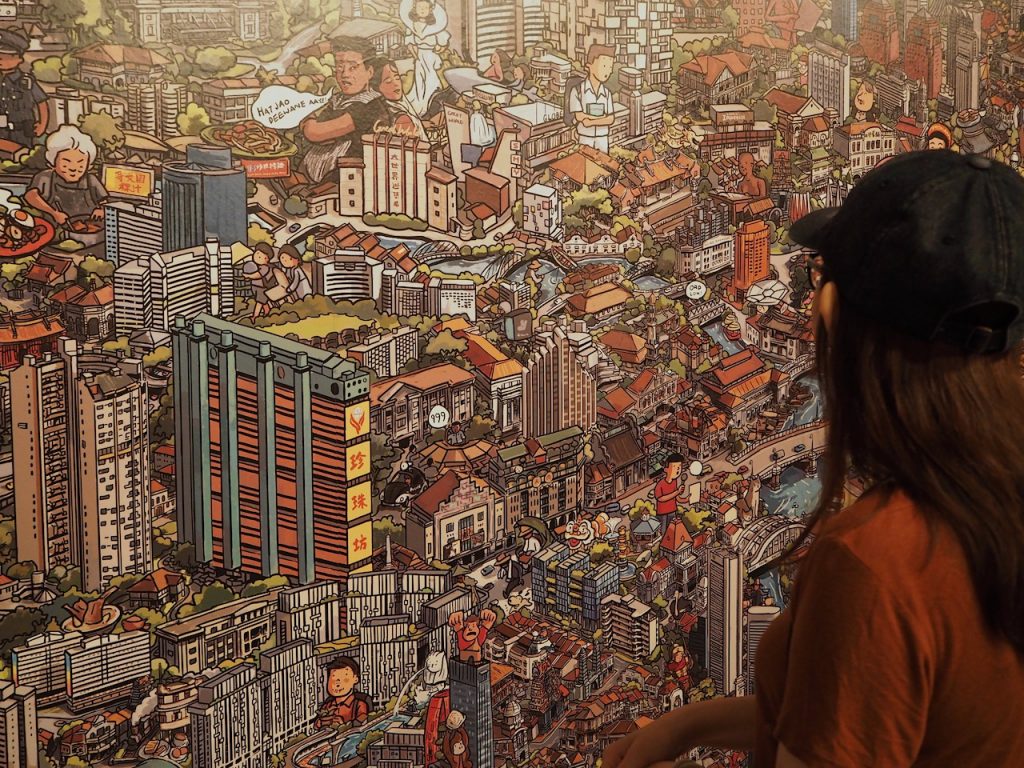
I stand beside 28-year-old Yun Jie for about 10 minutes before I decide to break her concentration. She appears extra engrossed in the mural, and I soon learn that it’s because she has just returned to Singapore after being away for three years. Looking at the mural reminds her of everything she’s missed out while living overseas.
“This mural is really detailed, so props to the artist for that. Definitely recognise a few places, such as People’s Park Complex. There’s construction work going on in Singapore every day, but I appreciate that we’ve kept that iconic Chinatown building,” she muses.
“I feel as though we’re progressing too fast. I don’t like it when we pull down old buildings, but I guess we don’t have a choice – we have very little space.”
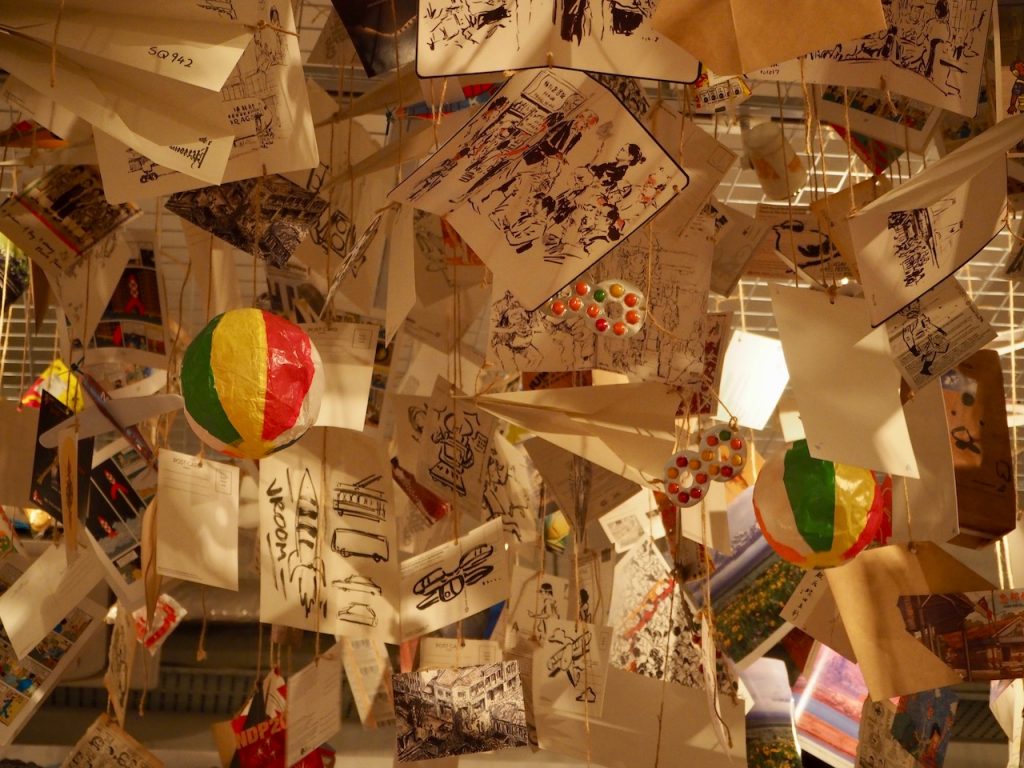

“Look at these childhood toys,” he says, pointing to the paper balls. “Back then we used to make these ourselves. But I think now children have teachers to make them in school.”
Mr Lam switches to Mandarin to tell me about how Singapore has progressed “too fast”, a feeling that observing the wall mural has evoked.
“But it’s okay if you can catch up,” he quickly adds.
And what about him? Can he catch up? I ask.
“I try my best.”
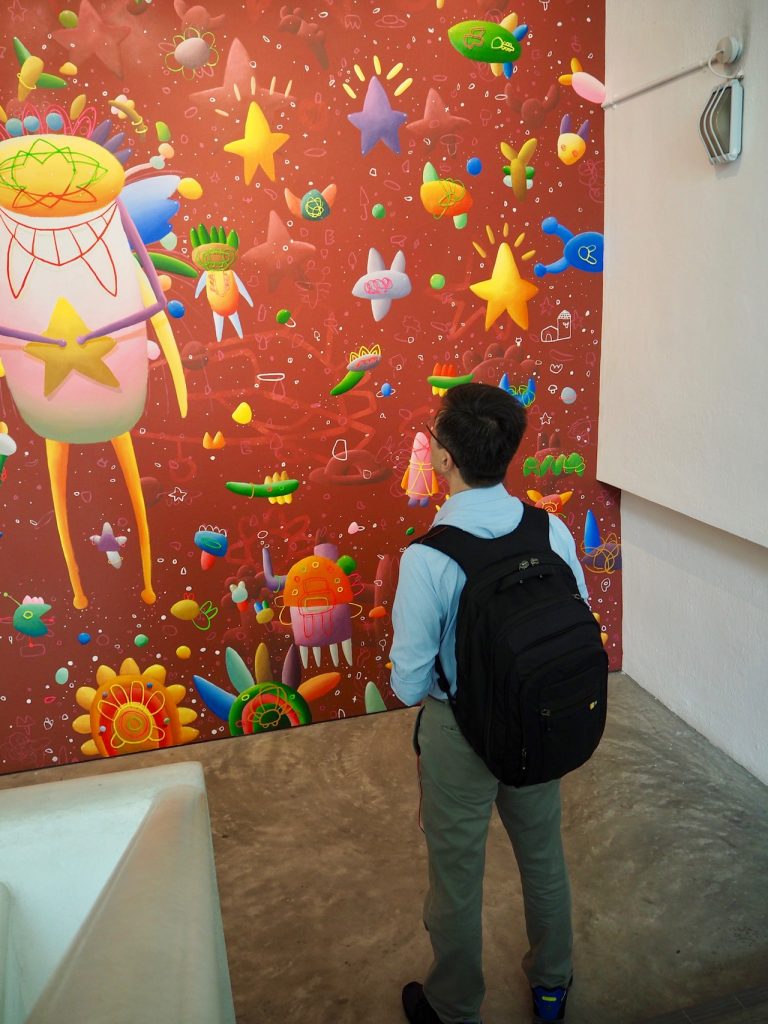
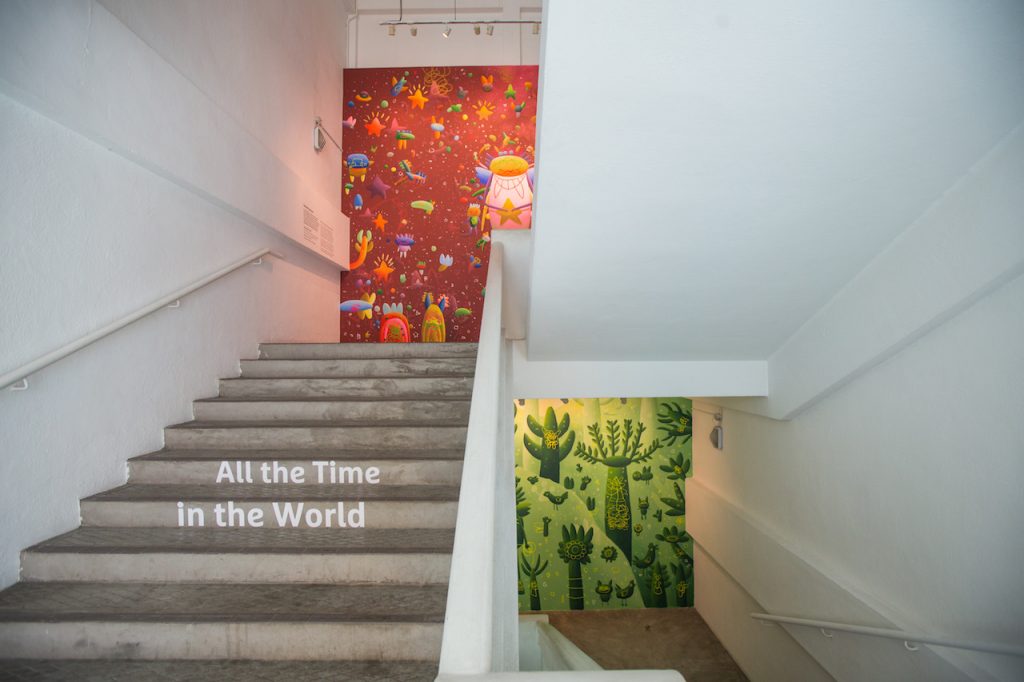
His earphones are plugged in, so I approach him apprehensively.
After he opens up, I discover that Kyu Sang Choi, 48, is Korean and grew up in the countryside in Korea.
“When I was younger, I didn’t have toys. I’d play in the mountains. We have four seasons, and every season brings with it its own colours. It reminds me of this painting.”
We speak a little longer about his childhood experiences of living so close to nature, before I sense that he wants to be left alone.
Speaking to certain strangers can often resemble a waltz, each party waiting for the other to decide when the other is tired and want to rest. You just need to be aware of subtle signs, such as a dip in tone or a brief sideways glance, to understand that you’ve come to the end of your time with them.
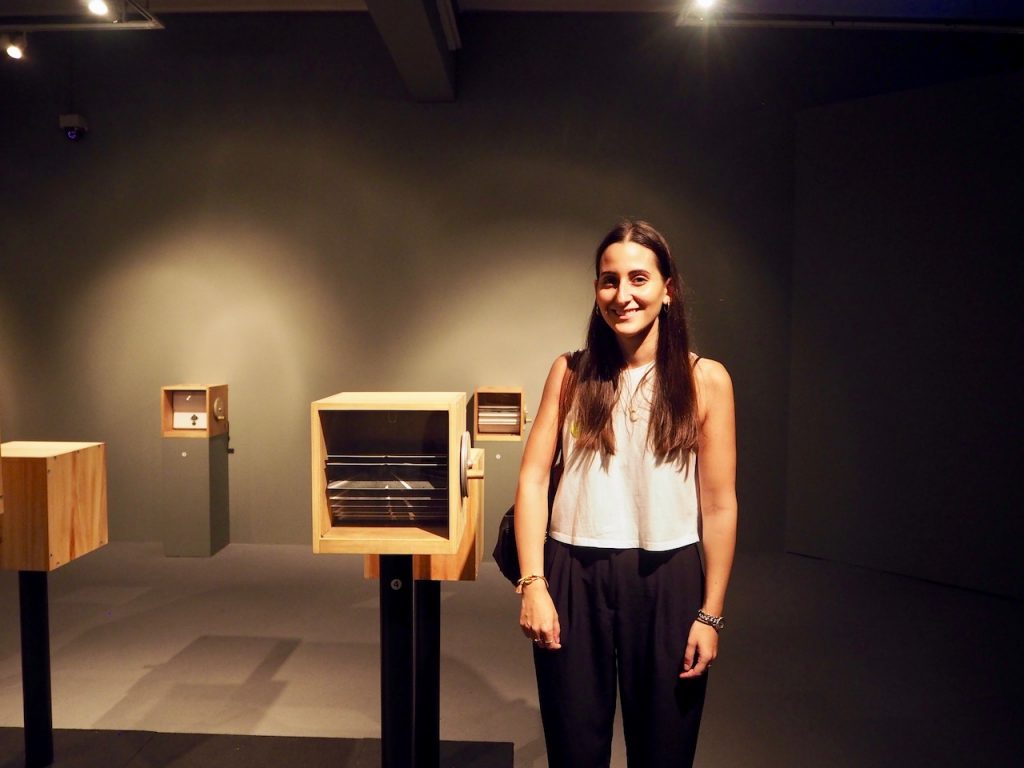

She tells me, “This installation reminds me of the flipbooks I used to make as a child, where I’d draw stick men on the pages then flip the pages quickly to make my drawings ‘move’. I also liked the other installation, ‘Passage’ [by The Gedaze Project], on the fourth floor. That’s really tactile and encourages visitors to play with it.”
Her own work deals with collective memory, the imaginative values that people assign to work, and the impact of imagination on memory. As such, I empathise with her choice to spend her ‘day off’ at an exhibition that tackles similar themes. There’s truly no such thing as rest for a creative professional.
Just before parting ways, Chloe tells me to hit her up when I’m in London next year.
I reckon I’ll do just that.
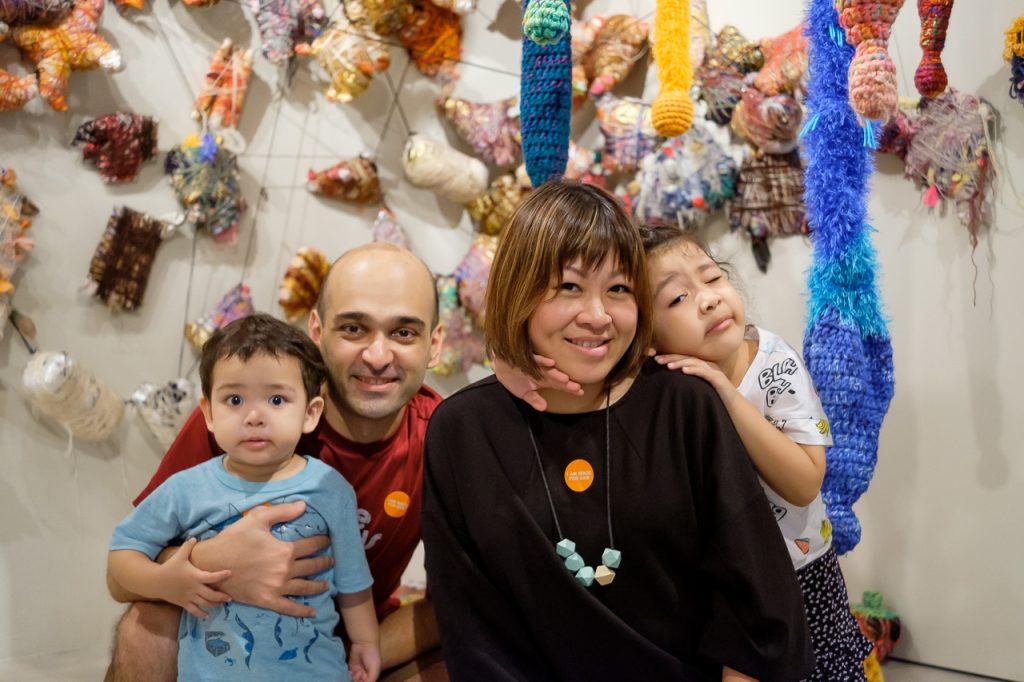
Here, I catch a family of four immersed in the artwork.
38-year-old George Khanashat tells me that his family visited Imaginarium over the last few years as well, and that they continue to return as every year’s artwork is different. Surprisingly, George only took to art as an adult.
“My wife is an art teacher. I only started becoming interested in art because of her. With art, you learn new things that may have been your blind spot previously. Even though I’m not sure how to interact with some of the exhibits, I approach it with childlike fascination because it’s so new to me. I wonder about the creator’s thought process,” he says.
“It helps when I see my children happy around art. They question things. They love drawing and writing.”
Someone once told me that your whole perspective on life changes after you have children. George, I suppose, is proof of this statement.
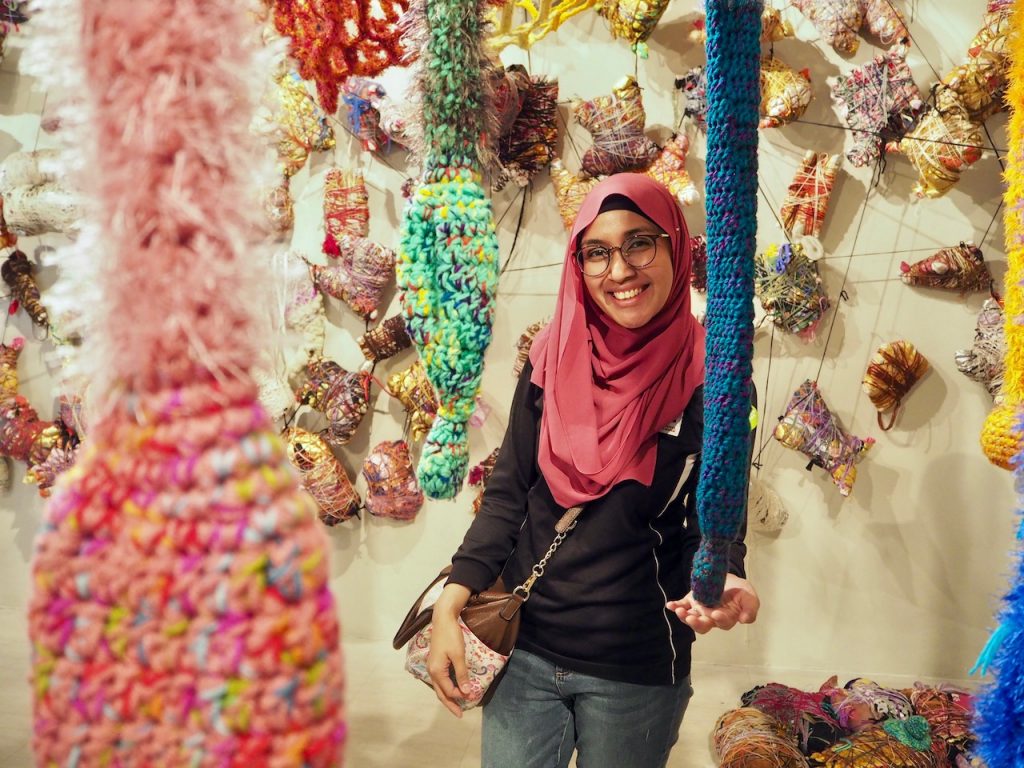
As she admires “Passage”, she sheepishly admits that she once tried crocheting, and failed miserably.
“I don’t know how some people can make gloves, cardigan, and what not. You need a lot of patience. I prefer painting and papier-mâché,” she laughs.
“In a way, art is related to where you’ve been. For example, if you like to travel, you’ll seek out inspiration on your trips. Like when I go to Indonesia, I take home some batik for my students to try. Teachers have a responsibility to expose different types of art to students.”
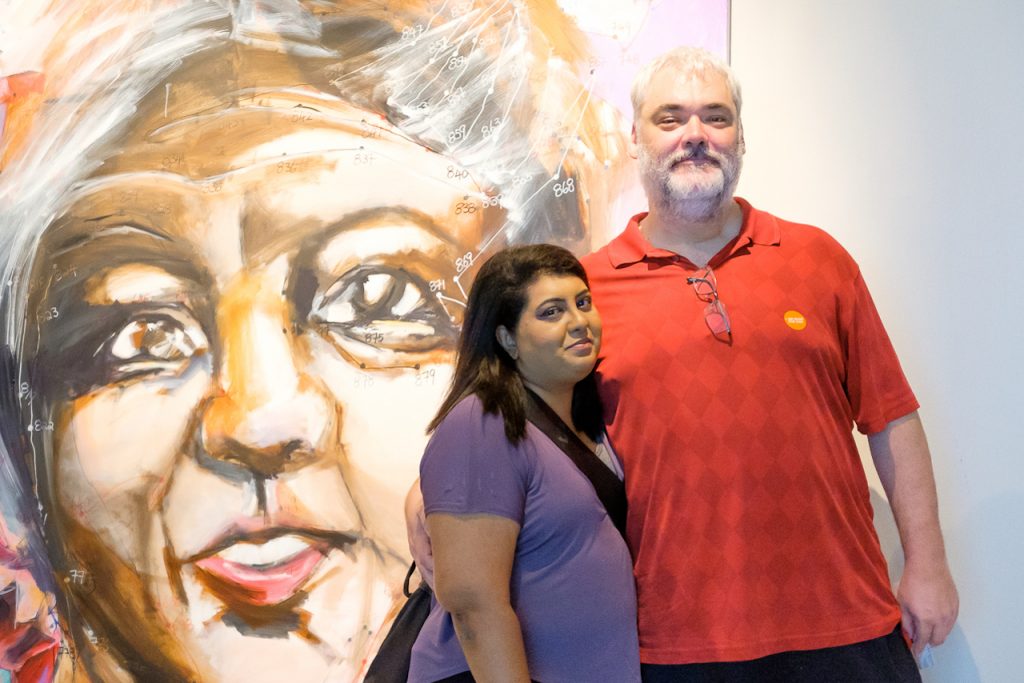
As a media graduate, Vidya appreciates art because it offers an avenue for people to express their varying perspectives. While gesturing to one of the paintings, she explains that some might believe the artwork spilled over onto the wall on purpose. Others might assume the canvas just wasn’t big enough.
Both Vidya and Todd are intrigued by this installation, because each painting looks like “both a young and old person at the same time”. The accompanying video also shows the artist’s process.
“In Singapore, we’re so interested in seeing the end result that we miss out on the journey. So I appreciate this video,” she says.
Sensing that she has a lot more to share, I ask if Vidya has had time to look at any other artworks.
“The crochet artwork really moved me. The juxtaposition between the neat and the haphazard crochets made me feel trapped and scared, as though I was witnessing something struggling to get out.”
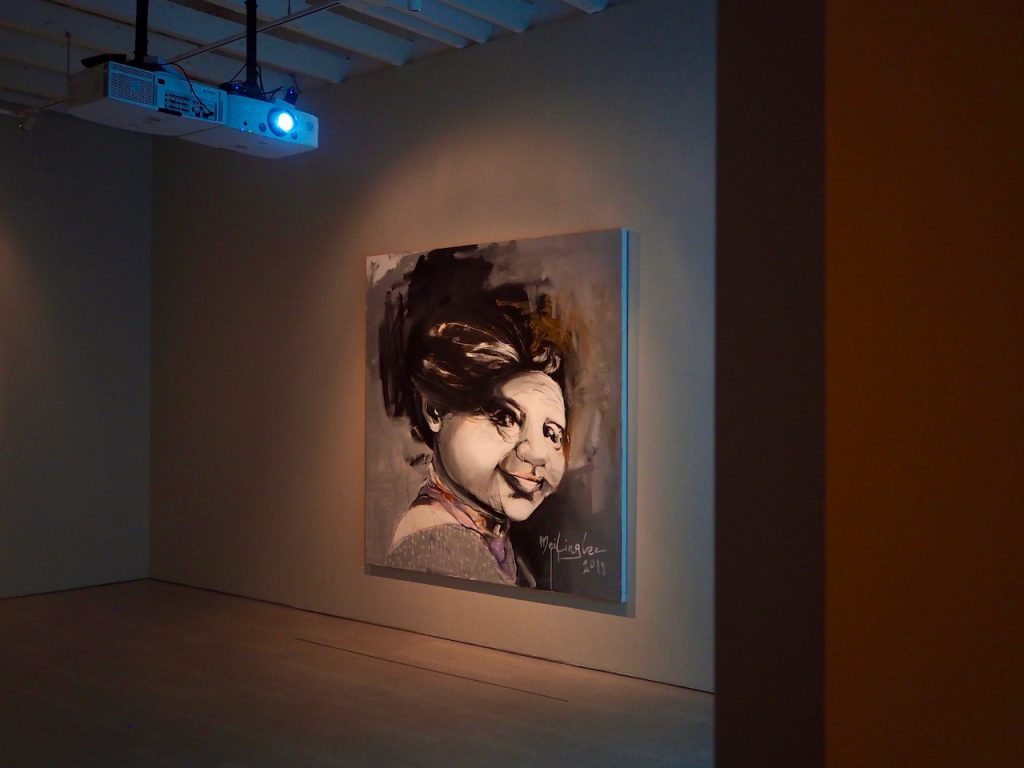
If you should choose to strike up a conversation with any of them, it may not be revelatory or change your life. But for 15 minutes at least, you’ll discover that you’re not the only one trying to understand art.
Imaginarium: Into the Space of Time runs till 26 August at Singapore Art Museum’s annexe building, SAM at 8Q (8 Queen Street). Entry is free for Singaporeans and PRs, and is free for all during the Singapore Night Festival (17 to 25 August 2018).
Like hanging out with strangers too? Let us know: community@ricemedia.co.


